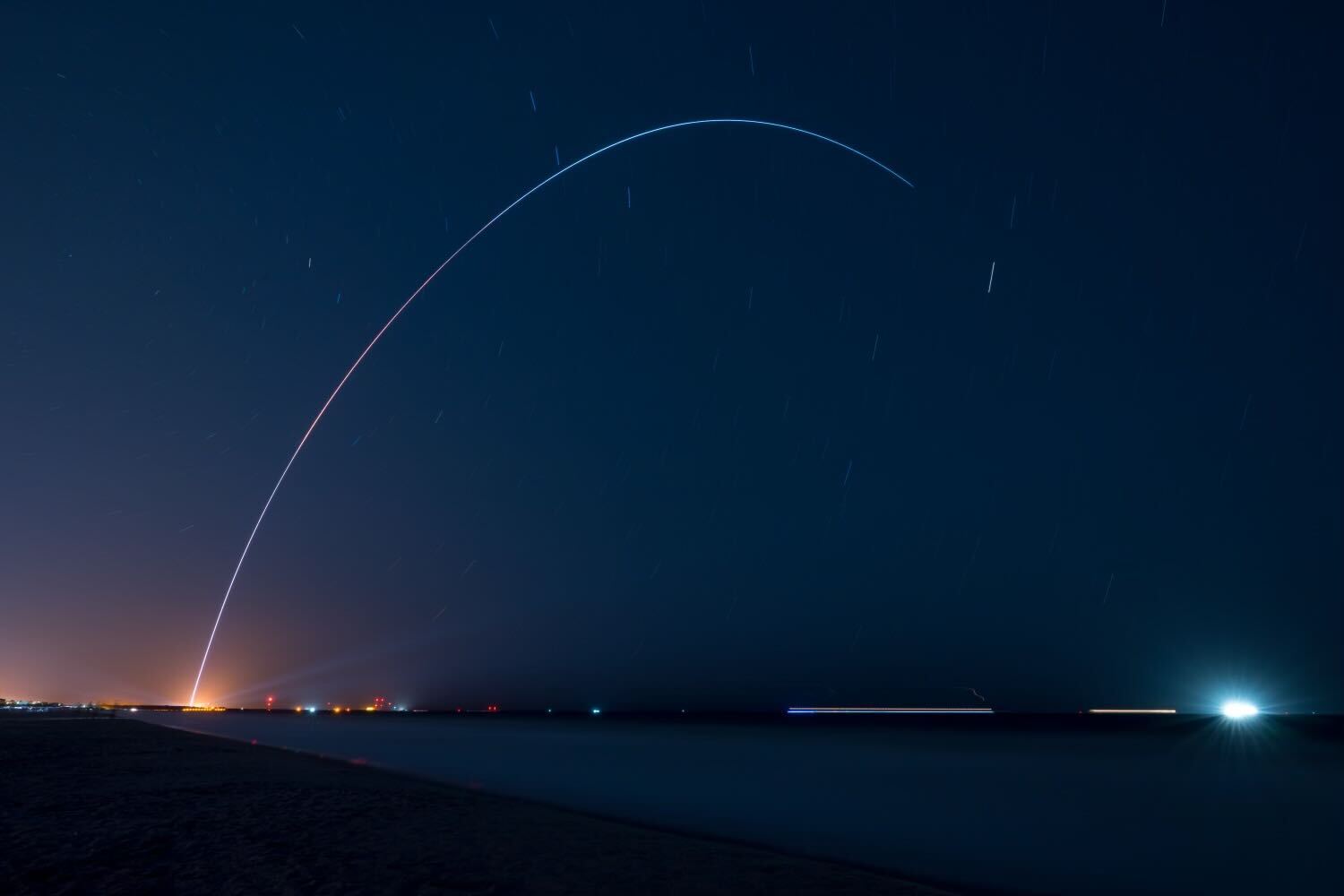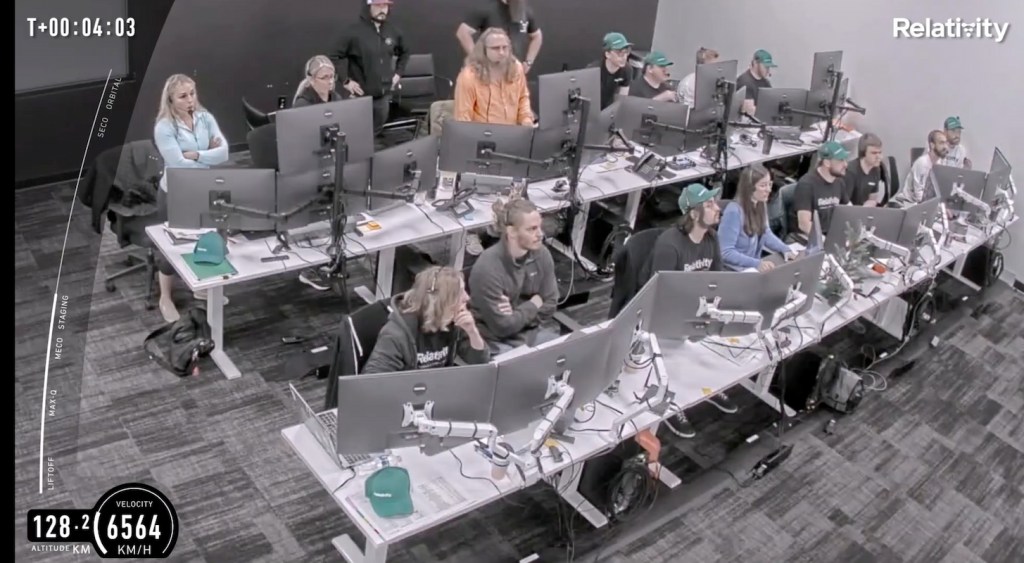
Over screams of excitement, Relativity’s livestream hosts continued to update us on Terran 1’s maiden launch and the making of history. While the rocket didn’t end up making it into orbit, it just barely crossed over the boundary of space and far exceeded the mission’s milestones, still bringing joy to the host’s voices, even while announcing the failure.
Second stage anomaly cuts Terran 1 from orbital glory
Lifting off just before midnight EST after a rocky countdown of upper-level winds and (once again) boaters wandering inside the exclusion zone, Relativity became the first company to launch a 3D-printed orbital rocket to space.
After an almost hour-and-a-half delay, all parts of the Terran 1’s launch criteria aligned for lift-off from SLC-16 on Cape Canaveral Space Force Station at 11:25 p.m. EST. And lift off Terran 1 did. Powered by nine Aeon 1 engines, the 85% 3D printed rocket rose into the Florida night sky and cleared the Space Coast.
Terran 1 successfully made it past Max-Q, the most intense portion of aerodynamic forces on the rocket, verifying that 3D-printed structures can endure the stresses of spaceflight. After Max-Q, Terran 1 successfully shut down the first stage engines, staging, and what looked like the ignition of the vacuum Aeon engine on the second stage.
Sadly, Terran 1’s second stage shut down shortly thereafter, causing the vehicle to crash into the Atlantic Ocean. However, at the time of the anomaly, Relativity’s on stream altimeter red 128 km, making them at least the first 3D printed orbital rocket to make it to space.

After the second engine shut down and it was seen that the rocket would not be going any further, Relativity ended its coverage. Hopefully, we will learn more in the coming days or weeks about what caused the second-stage failure and how the rocket performed overall.
Terran 1 outperformed the mission’s goals
I’m not going to finish this article without noting how impressive it is that Relativity got this far on Terran 1’s first launch. Good Luck Have Fun’s mission was to gather data during flight (specifically Max-Q) to verify ground testing results and the rocket’s design. But it did so much more than that.
Making it all the way to second-stage ignition verified many more parts of the rocket and gave the teams at Relativity more data to look over to see how the rocket performed. I think this is truly a testament to the rapid prototyping and testing that is available with 3D printing versus conventional manufacturing techniques.
While many of us were excited to hopefully see Relativity get to orbit and claim its glory, the good news is that no customer’s payloads were lost as there were none. The company’s first completed circular print got a great send-off to its now watery grave.
And just like how probably many of the early engineers felt when their first prints failed, it’s just a small step in a long road of making launches of Terran 1 rockets the norm.
Feature Image: Relativity Space / Trevor Mahlmann
FTC: We use income earning auto affiliate links. More.

Comments